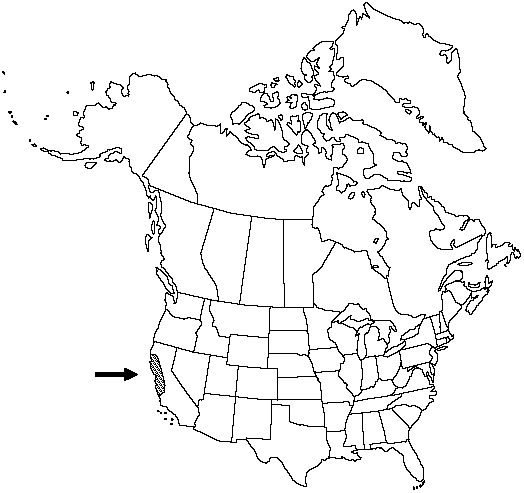Difference between revisions of "Polystichum dudleyi"
J. Wash. Acad. Sci. 8: 620. 1918.
FNA>Volume Importer |
imported>Volume Importer |
||
| (One intermediate revision by the same user not shown) | |||
| Line 8: | Line 8: | ||
}} | }} | ||
|common_names=Dudley's sword fern | |common_names=Dudley's sword fern | ||
| + | |special_status={{Treatment/ID/Special_status | ||
| + | |code=E | ||
| + | |label=Endemic | ||
| + | }} | ||
|basionyms= | |basionyms= | ||
|synonyms={{Treatment/ID/Synonym | |synonyms={{Treatment/ID/Synonym | ||
| Line 48: | Line 52: | ||
|publication title=J. Wash. Acad. Sci. | |publication title=J. Wash. Acad. Sci. | ||
|publication year=1918 | |publication year=1918 | ||
| − | |special status= | + | |special status=Endemic |
| − | |source xml=https:// | + | |source xml=https://bitbucket.org/aafc-mbb/fna-data-curation/src/2e0870ddd59836b60bcf96646a41e87ea5a5943a/coarse_grained_fna_xml/V2/V2_755.xml |
|genus=Polystichum | |genus=Polystichum | ||
|species=Polystichum dudleyi | |species=Polystichum dudleyi | ||
Latest revision as of 20:25, 5 November 2020
Stems erect. Leaves monomorphic, arching, 2–10 dm; bulblets absent. Petiole 1/5–1/3 length of leaf, densely scaly; scales light brown, gradually diminishing in size distally. Blade broadly lanceolate, 2-pinnate, base not narrowed. Pinnae narrowly lanceolate, not overlapping, in 1 plane, 3–13 cm; base oblique, apex acute with subapical and apical teeth same size; microscales filiform, lacking projections, sparse abaxially, but longer than in other Polystichum species, forming loosely tangled network over blade and sori (such network only in this species), sparse adaxially. Pinnules ± stalked, linear-falcate to oblique-rhombic, acroscopic auricle well developed on proximal pinnules; margins spinulose-dentate; apex acute. Indusia ciliate. Spores brown. 2n = 82.
Habitat: Moist forests
Elevation: 0–100 m
Discussion
Polystichum dudleyi is confined to coastal central California. Hybrids with P. californicum are relatively frequent where these species occur together. These hybrids would key here but, unlike P. dudleyi, they are less divided and have aborted sporangia. The sterile diploid hybrid with P. munitum is also frequent in areas of sympatry. It is indistinguishable from P. californicum except for malformed sporangia and chromosome number (W. H. Wagner Jr. 1973).
Selected References
None.
